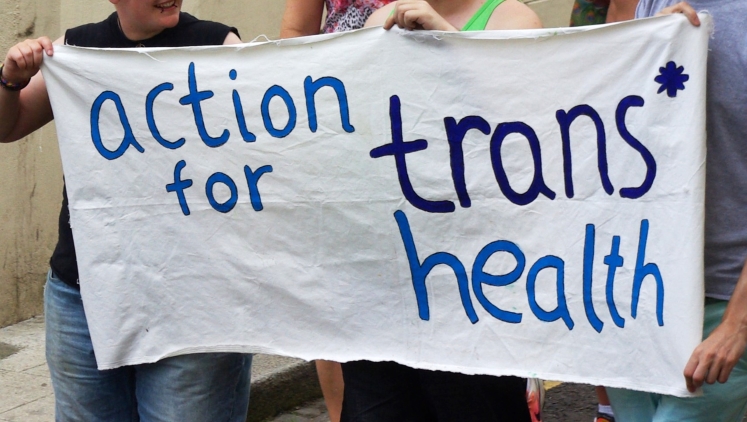 Written with the unique perspective of someone who has, for three decades, been involved with Martin Luther King Jr.’s legacy, Clayborne Carson gives readers an insider’s account of what transpired after the Dream speech, and beyond. A rich and engrossing memoir of black empowerment at a unique moment in time, this is an undoubtedly special contribution to King’s memory, writes Roger McCormick.
Written with the unique perspective of someone who has, for three decades, been involved with Martin Luther King Jr.’s legacy, Clayborne Carson gives readers an insider’s account of what transpired after the Dream speech, and beyond. A rich and engrossing memoir of black empowerment at a unique moment in time, this is an undoubtedly special contribution to King’s memory, writes Roger McCormick.

Martin’s Dream: My Journey and the Legacy of Martin Luther King Jr. Clayborne Carson. Palgrave Macmillan. January 2013.
Martin Luther King and Bobby Kennedy were both assassinated, within a few weeks of each other, in 1968. Both had achieved much and had the potential to offer much more to their country and to the world (King was 39 and Kennedy was 42) but, by the time the sniper’s bullet hit him, in a motel in Memphis, King had already achieved the stature of one of the great men of our time. He had received the Nobel Peace Prize in 1964; the impact of his role in the 1963 March on Washington, and his “I have a dream” speech at the culmination of the event were recognised as having historic significance; he was awarded the Presidential Medal of Freedom and the Congressional Gold Medal posthumously; and there is now a national holiday in his honour in the USA and a memorial to him in the National Mall at Washington DC.
At the time of King’s death, the author of this book was 23, worried about being sent to Vietnam (a fate that he escaped), looking for a job “with decent pay and medical coverage” and had just returned to the USA from a 130 day tour of Europe (cost: $1,770) with the girl (Susan) who later became his wife. 17 years later, in 1985, the author was commissioned by King’s widow, the formidable Coretta Scott King, to be the Editor of the voluminous collection of papers that King had left behind (and which at that time were, for the most part, in the care of the King Center for Nonviolent Social Change in Atlanta). The work has taken him well into the 21st century (Vol. 6 of the Papers was published in 2007) and has led the author into many other King-related publishing and speaking activities (including the writing of a play and a form of “posthumous autobiography”). This engaging book is, in effect, a short memoir of, first, the author’s early life, and, then, of his extraordinary experience in coping with his momentous King Papers Project assignment and the King family and the various disputes that related to the King inheritance (including as to who owned or had the right possess certain of the papers, who had the intellectual property rights in them, who could copy them, how much they were worth etc., etc.).
In reading the book, we learn a great deal about King, about his family, especially his father, “Daddy King”, his wife and his children, and, of course, about the author himself. King and the author are neatly contrasted at various points. The author is from Los Alamos, New Mexico (“far from the front line of the southern protest movement”), has “no memories” of his birthplace, and lived “in a neighbourhood with no history before my family moved there” which was in a town “hardly older” than he was. King, on the other hand, saw many of the key events of his life take place near to his “birth home” in Auburn Avenue, Atlanta, and “he spent the first eleven years of his life in the house that his grandparents had purchased early in the twentieth century”. The author never knew two of his grandparents and hardly knew the other two; and he had “never attended a predominantly black church” until he went to college. King’s family’s “proud past” included the fact that both his father and grandfather had been preachers at the Ebenezer Baptist Church in Atlanta (where King himself preached). The account of King’s courtship of Coretta is particularly entertaining. At one point, on being challenged by King’s father as to her suitability for his son, Coretta, responded (not surprisingly, with some indignation) that she had “something to offer”. Coretta was fully involved with King’s work during his life and was keen to safeguard his memory and cause after his death. The author regards her as “one of the most important visionaries of the twentieth century”. President George W. Bush gave the eulogy at her funeral (2006), which was also attended by three former US Presidents.
We also encounter many of the famous figures from the US civil rights/black power movements (and related movements and organisations, such as the Student Nonviolent Co-ordinating Committee (SNCC) and the National Farm Workers Association ) of the 1950s and 60s: Rosa Parks, Malcolm X, Stokely Carmichael, Cesar Chavez, Bob Moses and Marion Barry are amongst those who are frequently mentioned, sometimes as acquaintances or even interviewees.
The author’s own life, although bathed in King’s reflected greatness, is interesting in its own right and his pre-King Papers career, via the SNCC, UCLA (where, somewhat to his surprise, he became an “acting assistant professor” in 1970) and Stanford (which he joined in 1973 and was where he was based when he was offered the King Papers role) as well as his personal life receive just the right amount of coverage .
The offer to take on King’s Papers came as a surprise. Carson had never published anything on King. But it was impossible to resist. From the outset, the role posed tensions as to whether the author should base himself in Atlanta (which was what Mrs King wanted) or remain at Stanford (the author’s preference). Stanford won, but one senses that the relationship with the family, which was never going to be that easy, was made a tad more difficult by the author being so far away from where most of the papers were located. However, over time, the tension between the two locations produced some lasting benefits, with a strong connection between Stanford and the King legacy being one of the results.
However, notwithstanding the author’s entertaining accounts of his various trials and tribulations and his undoubted contribution to King’s memory and worldwide appreciation of King’s work, it is Martin Luther King who, inevitably, is the star of this book. His impact was such that we still tend to hang on (and re-read) every word whenever he is quoted. We sense some of the author’s excitement when he made a late discovery of sermons and other materials in Correta’s basement. These included a manuscript of King’s Nobel acceptance speech:
“I struggled to control my emotions as I grasped the significance of King’s text……“I want to accept this award on behalf of a civil rights movement which is moving with determination and a majestic scorn for risk and danger to establish a reign of freedom and a rule of justice” “
But, as is well known, despite his outstanding qualities, King was no angel. This places him in good company with many other outstanding figures, of course. One of the author’s early challenges, for example, was how to deal with the delicate question of King’s suspected plagiarism during his student years. A storm predictably blew up when the “revelation” leaked out in a somewhat disorganised manner, but it blew over. King was something of a magpie with his borrowings from scripture and other writings for his sermons and speeches. But his delivery, and the context of the times, breathed new life into these passages. His greatest speech drew from various other speeches he had previously given, and these in turn included a few acknowledged “borrowings” (for example, the reference to “freedom must ring from every mountainside”). And that speech is, of course, etched in the memory of everyone who has heard it. The author ends the book:
“His Dream still endures in the freedom struggles of our time and all our future freedom struggles. We can imagine him speaking of the day when freedom will ring in “every village and every hamlet” throughout the world and thereby “speed up that day when all of God’s children” “will be able to join hands and sing in the words the old Negro spiritual, Free at last, free at last. Thank God Almighty, we are free at last.”
The fundamental dignity of the man, through the pages of this book amongst other things, still shines through the mists of time and the power and simplicity of his message echoes, loud and clear, down the decades.
Please read our comments policy before commenting.
Note: This article gives the views of the author, and not the position of USApp– American Politics and Policy, nor of the London School of Economics.
Shortened URL for this post: http://bit.ly/12518o6
Featured image credit: MudflapDC (Creative Commons BY NC ND)
—————————————
Roger McCormick is the Director of the Sustainable Finance Project at the London School of Economics and Political Science, and a Visiting Professor at LSE. He is also the author of Legal Risk in the Financial Markets (Oxford University Press, 2nd ed. 2010). He retired from full-time private legal practice in 2004, having practised law in the City of London for nearly thirty years. Read reviews by Roger.






